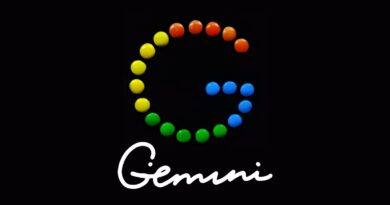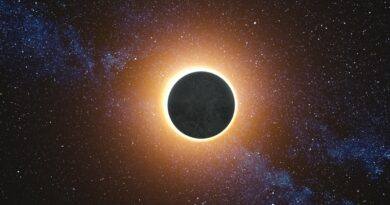Is ChatGPT The Best? Then Which One Is Better?
WFY Bureau | Technology & Science
Your creative aid is not ChatGPT; rather, it only facilitates the cheesy imitation of a critical thought process.
To kick things off, let’s pose an intriguing question. What are the signs that indicate this article was crafted by a human rather than generated by artificial intelligence (AI)?
One could contend that the structure, flow, and language of this article diverge from the typical outputs associated with AI-generated content. It’s interesting to note that AI-generated responses often feature a notable abundance of punctuation, adhering to distinct and formulaic patterns that can be quite striking.
That seems reasonable.
Allow me to pose a more thought-provoking question: what indicators can you identify that suggest the reasoning in this article originates from a human mind rather than artificial intelligence? Is there a dependable method to determine that?
Throughout the annals of human history, the realms of creativity and intellect have been marked by a relentless pursuit of excellence, characterised by struggle, refinement, and countless hours of dedicated investment.
Throughout history, technology has played a pivotal role in enhancing human capabilities, particularly in tasks that demand active involvement and critical thinking. The advent of calculators and the emergence of advanced computing devices have revolutionised the way we work, effortlessly handling the heavy lifting and significantly boosting productivity in various fields.
The integration of these tools enhanced our cognitive endeavours, which lie at the heart of creativity, rather than supplanting them. The latest advancements in AI are shaking up the established norms of technology. It is not just about supporting human creators; it is also starting to take their place.
Every creative individual, whether a writer, artist, or philosopher, grapples with the ebb and flow of ideas. The struggle unfolds over days, weeks, months, and at times, stretches into years. Throughout this course, a multitude of drafts emerges and fades away, accompanied by the extensive emotional investment that shapes the journey.
In a remarkable turn of events, artificial intelligence is transcending traditional boundaries, demonstrating an astonishing ability to generate complete essays, stunning artworks, and innovative solutions in mere seconds. The intricate journey of navigating form, structure, idea, inspiration, and meaning that defines the creative process is often overlooked, leaving a void in the human experience.
The final product, while appearing polished and often striking to the casual observer, remains disconnected from the challenges that infuse creative endeavours with true depth and authenticity.
The rise of language models is reshaping our understanding of creativity and what it truly means to create. In the realm of creativity, a fascinating dynamic unfolds between the effort invested and the resulting outcome. This intricate relationship has long been a cornerstone of artistic expression, shaping the way we perceive and appreciate creative endeavours.
While the connection may not be directly proportional when it comes to quality, there is a clear correlation in terms of labour and time invested.
The late-night frustrations, those long evening strolls in pursuit of inspiration, the discarded drafts, and the creative breakthroughs that seemed to emerge from thin air—sometimes after weeks of relentless effort—were all integral to the artistic journey. And let’s not overlook the physical labour that goes into crafting a piece of art.
Immanuel Kant’s perspectives on creativity, as articulated in the Critique of Judgement, offer a fascinating exploration into the essence of artistic expression and aesthetic experience.
Genius is defined as the remarkable talent that imparts structure and guidelines to the realm of art. He proposed that genuine artistic creation emerges not from adhering to rules but rather from the very essence of the rules themselves.
True genius transcends mere recombination of existing ideas; it forges entirely new concepts born from an intrinsic drive that defies imitation.
In a fascinating twist, generative AI functions by absorbing and analysing extensive datasets, skilfully reconfiguring existing works through the lens of statistical probabilities.
This concept transcends mere invention as understood in the Kantian framework; rather, it represents an elevated form of imitation, refined to a remarkable degree of sophistication. Though the output presents a compelling argument, it falls short of the originality that stems from personal intuition and the challenges faced along the way.
In light of these developments, the question of authorship calls for a fresh examination.
In a groundbreaking assertion, Roland Barthes proclaimed the “death of the author,” suggesting that the essence of meaning is found not in the intentions of the creator, but rather in the interpretations crafted by the reader. Barthes’ critique focused on challenging the authority traditionally held by the human author, rather than advocating for a complete erasure of authorship itself.
As we navigate the era of artificial intelligence, we encounter a fascinating phenomenon: the emergence of texts that lack a traditional creator, one who brings experience, intention, or emotional depth to the table.
This development goes beyond merely redistributing meaning; it fundamentally displaces it.
Walter Benjamin cautioned that the advent of mechanical reproduction diminishes the unique aura of artwork, that singular essence rooted in the experience of human interaction across time and space.
The emergence of generative AI significantly amplifies this risk.
The creations born from this process exist solely within the realm of code and data, lacking any tangible origin or rich narrative of evolution. They exist free from the constraints of work and the passage of time. As we navigate through a landscape rich with artefacts, a compelling question emerges: it’s not merely about the identity of the creator anymore, but rather, is the act of creation itself still unfolding in our midst?
Authorship was once a clearly defined human pursuit, representing not merely the creation of a work but also a profound investment of one’s intellect, emotions, and ethical considerations into the artistic piece.
Throughout history, technological revolutions have emerged, yet none have truly questioned the essence of authorship or prompted us to reconsider the very nature of creation. Calculators have never penned theorems, word processors have not crafted novels or articles, and image-editing software has never conjured creations from nothing simply by following a few commands.
These tools functioned as extensions of the human hand, enhancing our capabilities without ever usurping the essence of human authorship.
In recent years, the emergence of generative AI has captivated audiences with its ability to create innovative products through straightforward prompts.
Artists have long debated the quality of the art produced, yet they frequently overlook a crucial point: we are witnessing generative AI in its formative years. The journey of growth is still unfolding.
The intriguing ability of this cutting-edge technology to conjure a product seemingly from nowhere, simply by responding to prompts, raises compelling questions about the boundary between human and machine creativity.
As advancements in generative AI continue to accelerate, the distinction between human-created content and that produced by machines is becoming ever more indistinct. This phenomenon not only pushes the boundaries of our comprehension of authorship but also redefines the essence of creativity itself.
The question of authorship in the context of collaborative writing involving AI and human contributions raises intriguing legal and ethical considerations. If an article is crafted and polished by an AI model like GPT, supplemented by authentic insights from an individual, such as person Z, the determination of authorship becomes complex. Who truly holds the title of author in this scenario? Is it the AI that generated the content, the human who provided the arguments, or perhaps a combination of both? This dilemma invites a deeper exploration into the evolving landscape of authorship in the digital age.
It could be argued that person Z plays a pivotal role in the creation of this article, as their intellect is intricately woven into its fabric. Imagine a scenario where all the arguments and reasoning are crafted by GPT, while Z takes on the task of manually writing this article by hand, ensuring it avoids any flags for being AI-generated.
His contributions lack intellectual depth, merely echoing arguments that have already been thoroughly reasoned. In this intriguing scenario, one might wonder who will take on the role of the author for this captivating piece. In the realm of artificial intelligence, detectors emerge as valuable allies in navigating the complexities of our first scenario. However, as we delve into the second case, the waters become increasingly unclear.
There is a compelling debate surrounding the notion of human agency in the age of artificial intelligence. Critics assert that individuals maintain their autonomy, as the actions of AI are ultimately guided by human input and decision-making. A dedicated individual is at the helm, skilfully providing prompts, editing, and curating the outputs generated by AI.
While their perspective holds some validity, it overlooks a crucial aspect: the human agency in this scenario is significantly diminished compared to its traditional strength.
Opting for a selection of automated replies pales in comparison to the profound journey of weaving meaning from the rich tapestry of uncertainty and potential, harnessing the full extent of one’s creative abilities.
Selecting a dish from a restaurant menu is a different experience than preparing a new recipe in your own kitchen.
The latest update to the GPT 4o model has sparked a captivating trend: transforming images into enchanting Studio Ghibli-style renditions. This phenomenon has quickly captured the imagination of many, becoming one of the most talked-about developments in the creative landscape today.
Only with the rise of this trend did individuals begin to reflect on how this technological evolution diverges from the patterns observed throughout the history of technological advancement.
While it may not forge a unique style of its own, it excels at emulating the diverse techniques of established artists it has studied. Individuals unfamiliar with the enchanting world of Ghibli films have chosen to embrace this trend, often without grasping the rich socio-cultural, historical, and philosophical nuances that define this unique style of animation.
For an artist aspiring to capture the enchanting essence of Ghibli’s style, the journey would demand countless hours of meticulous effort, a stark contrast to the swift capabilities of GPT, which accomplishes this feat in mere minutes. At this moment, a sophisticated style of animation and drawing, honed with precision over decades, finds itself distilled into a charming animated filter.
Imagine a novelist dedicating years to the intricate art of storytelling. This writer meticulously develops characters, hones every line, and navigates the waves of doubt and uncertainty that accompany the creative journey.
In contrast, consider an individual who merely provides prompts to create storylines, selecting what appears to be the most compelling from the array of options presented. With a relaxed demeanour, they offer only the slightest hints for enhancement, observing as the LLM effortlessly churns out a stream of words. Could we consider the latter as a true act of creation rather than just a process of consumption and editing?
The absence of profound human engagement is strikingly evident. In the intricate dance of creativity, the agency, the struggle, and the journey of becoming often remain elusive. Their absence leads to a dilution of meaning, impacting not only the final product but also the very act of creation itself. Experiencing what Marx refers to as ‘alienation’ is a common occurrence during the intricate journey of creation.
It is crucial to highlight that Gen AI represents more than just the next evolution in a series of creative tools. This marks a significant transformation.
In the realm of technology, the evolution has been remarkable. Previously, advancements enhanced human labour and creativity, allowing individuals to reach new heights. However, with the advent of generative AI, we are witnessing a shift where machines are not just assisting but often taking over tasks traditionally performed by humans. The evolution of creativity, influenced by this development, can often falter under simple prompts, overshadowing the profound inner journey of the creator.
The transformation at hand is far from trivial; it carries significant implications that warrant careful consideration. Understanding this distinction is essential and timely.
As artificial intelligence continues to weave itself into the fabric of our daily lives, it is essential to recognise that we are not merely adjusting to a novel instrument. Instead, we find ourselves in a profound dialogue about the essence of creativity, the nature of authorship, and the role of human presence in an era where machines are capable of mimicking our voices, emulating our artistic styles, and even engaging in thought and reasoning on our behalf.





